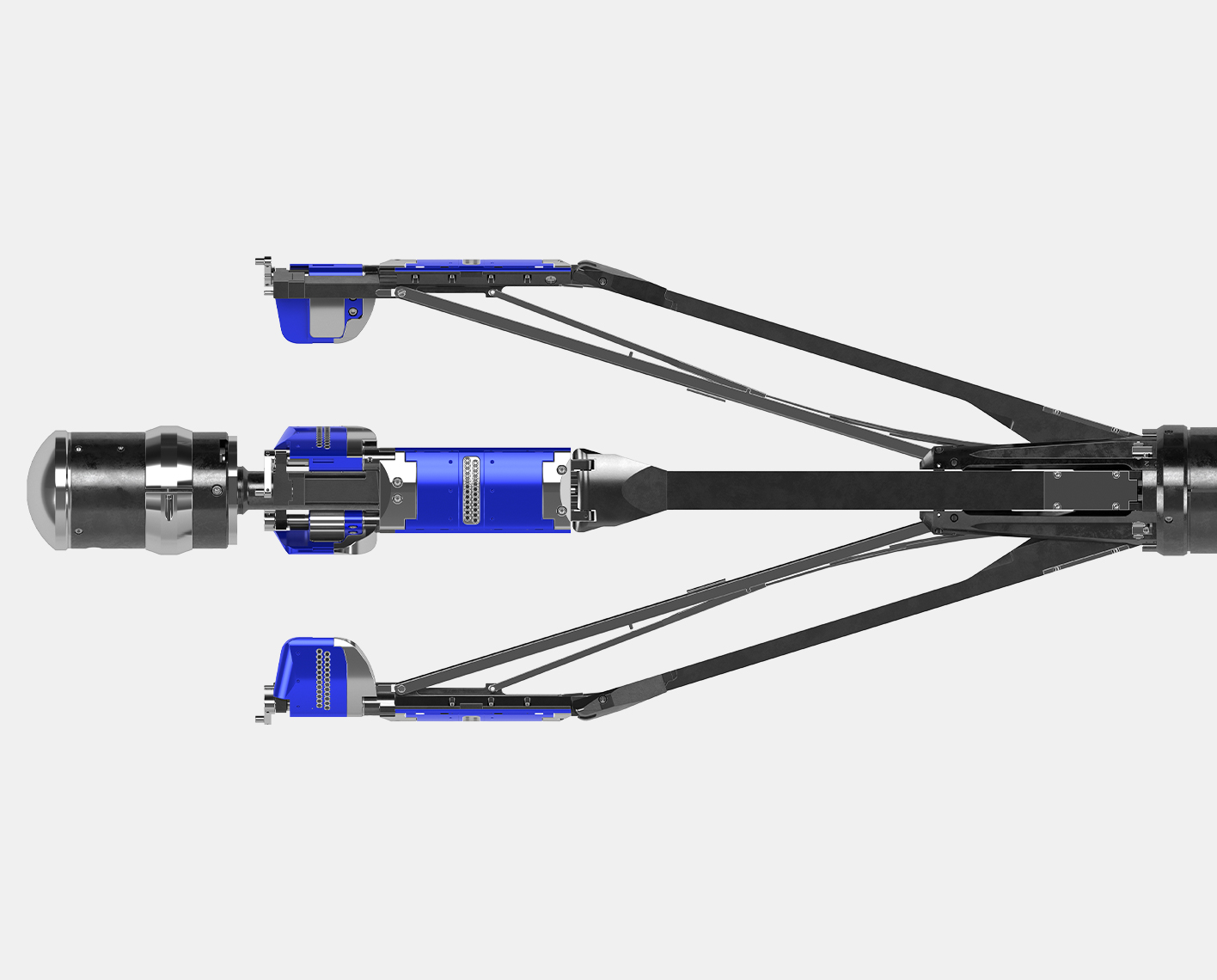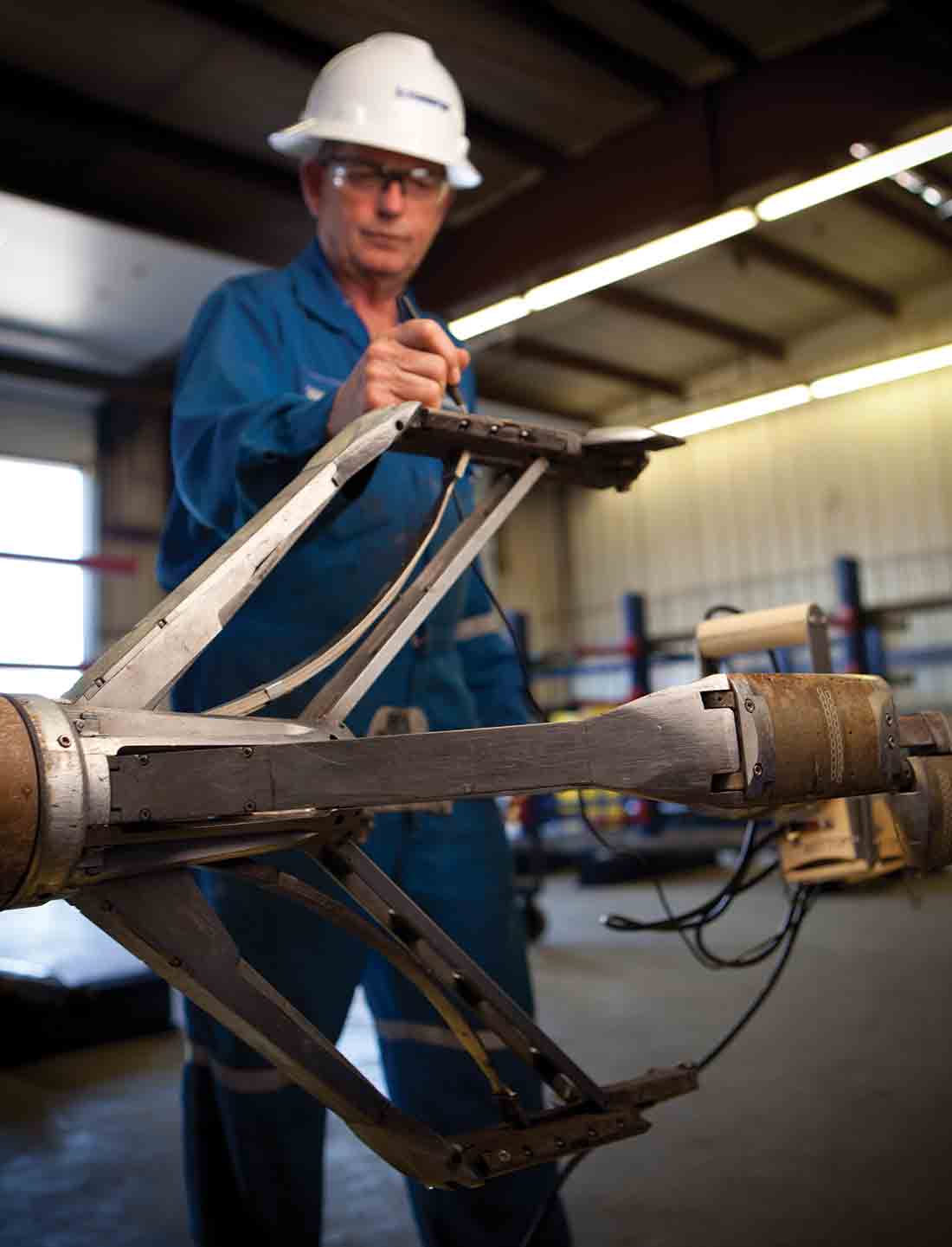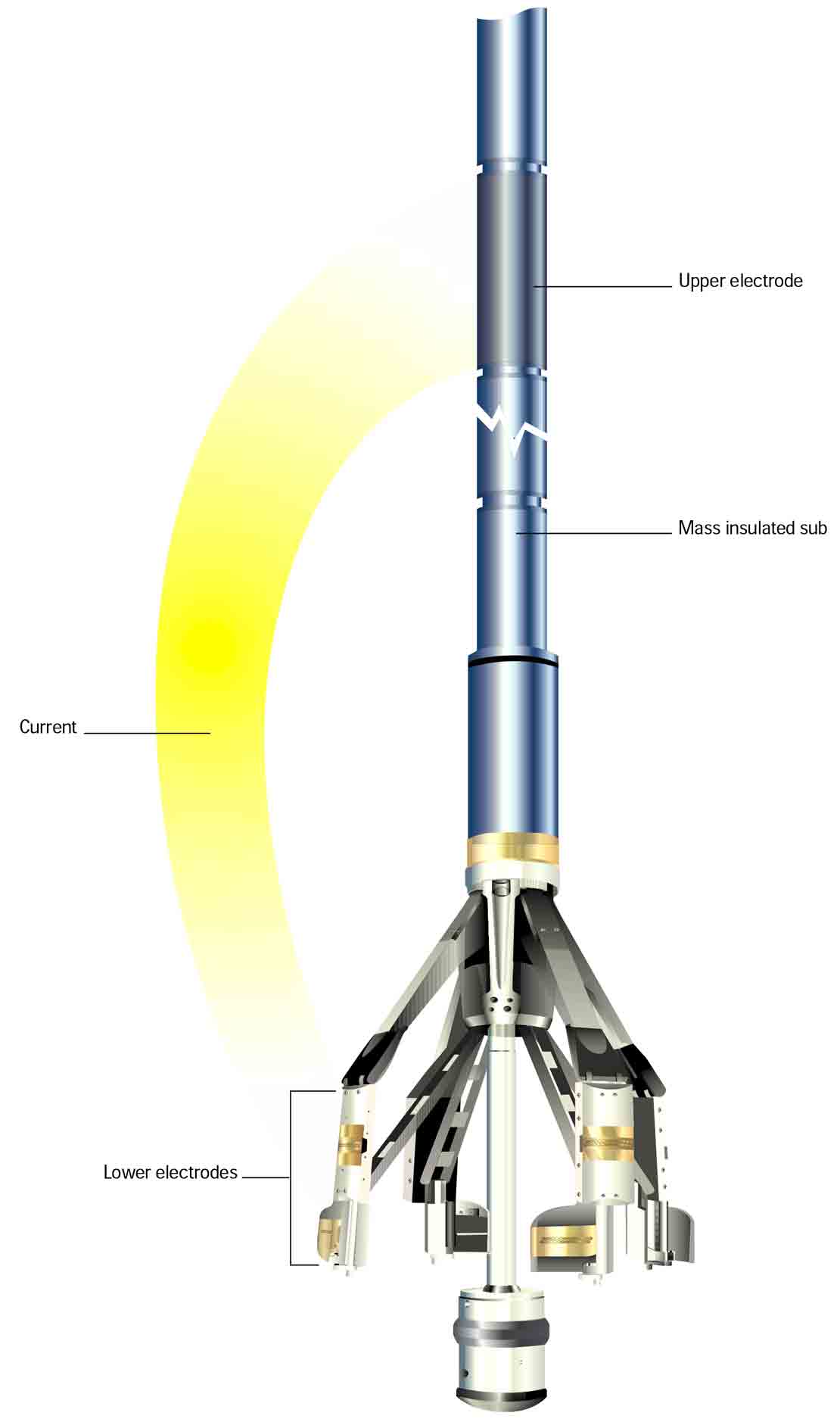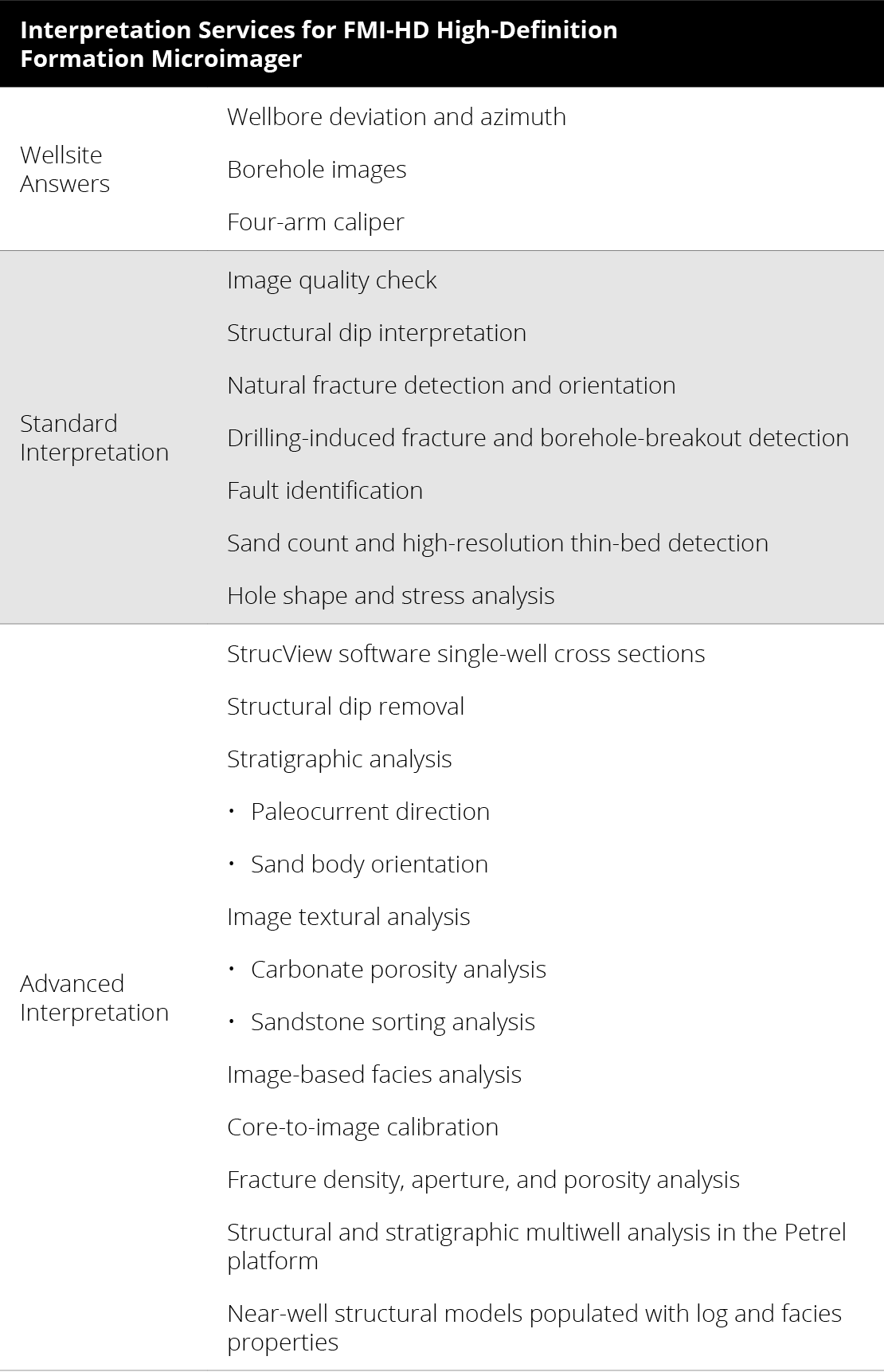Borehole Imaging for Completion Optimization
Integration of petrotechnical and geological properties
Quantify and differentiate natural and induced fractures, identify hard streaks, and mitigate sanding.

The FMI-HD high-definition formation microimager takes high definition to a new level. The visibility and interpretability of small features are increased by up to 4× for all environmental conditions, even across extreme variations in formation resistivity or resistivity anisotropy between the formation and mud.
This means that water-based mud environments and some oil-based muds that cannot be clearly imaged with conventional microresistivity imaging technology can now be seen in great detail.
The visibility and interpretability of small features on images from the FMI-HD microimager are significantly increased over that of conventional images for all conditions, even for features that are much smaller than the 0.2-in nominal resolution, depending on the resistivity contrast with the surrounding formation, however small.
The HD electronics of the FMI-HD microimager are sensitive enough that fluid-filled fractures less than 10 um in width are frequently imaged. The size of small features is quantified from the current flow to the button.


The FMI-HD microimager builds on the well-proven industry-standard FMI fullbore formation microimager. AC flows from the array of 192 pad-mounted “button” electrodes through the formation. Microresistivity changes related to lithologic and petrophysical variations in the rock are conveyed mainly by the high-resolution component of the current and are interpreted on the image in terms of rock texture, stratigraphic and structural features including dip, and fractures.
Completely new electronics provide a step improvement in operating range, reliability, and image quality. Enhanced parallel signal processing and high-resolution analog-to-digital conversion improve the tool’s signal-to-noise ratio to increase the sensitivity to fine contrasts in formation resistivity.
The FMI-HD high-definition formation microimager uses automatic signal processing optimization to image the entire dynamic range of a well’s formation resistivity in one run in addition to measuring dip. From these measurements, you can visualize sedimentary features and determine dip.
Beyond the wellsite answers listed for basic structural and sedimentary understanding, integrated interpretation employs advanced workflows, the multidisciplinary expertise of our interpretation geoscientists and engineers working with you as needed, and the application of software to maximize the value of your logging data. The result is the fullest possible understanding of structural and stratigraphic features, including complex faults, folds, porosity distributions, and net sand counts.


Reimagine energy performance and improve decision making with connected, intelligent, and autonomous solutions.
Learn more